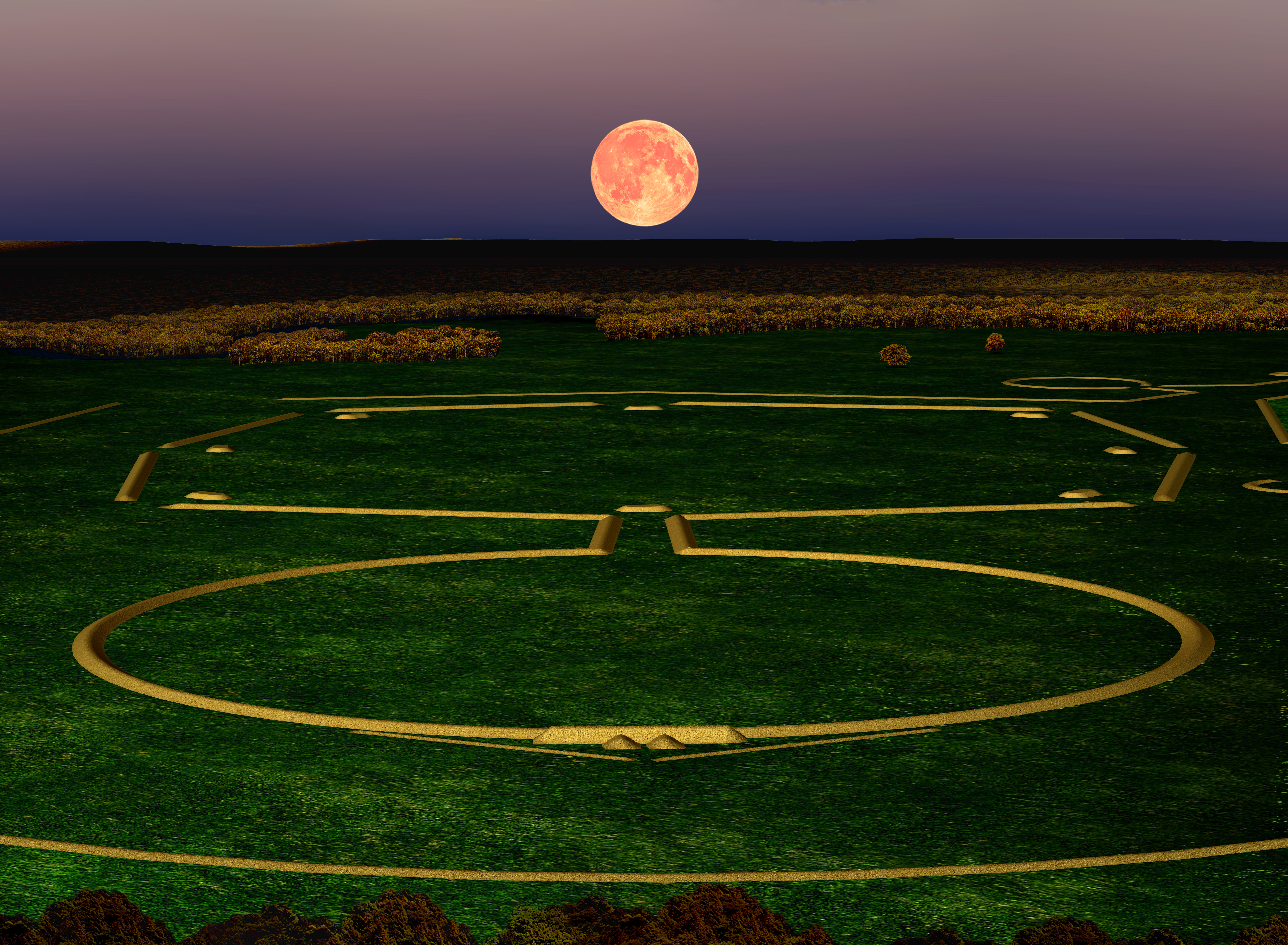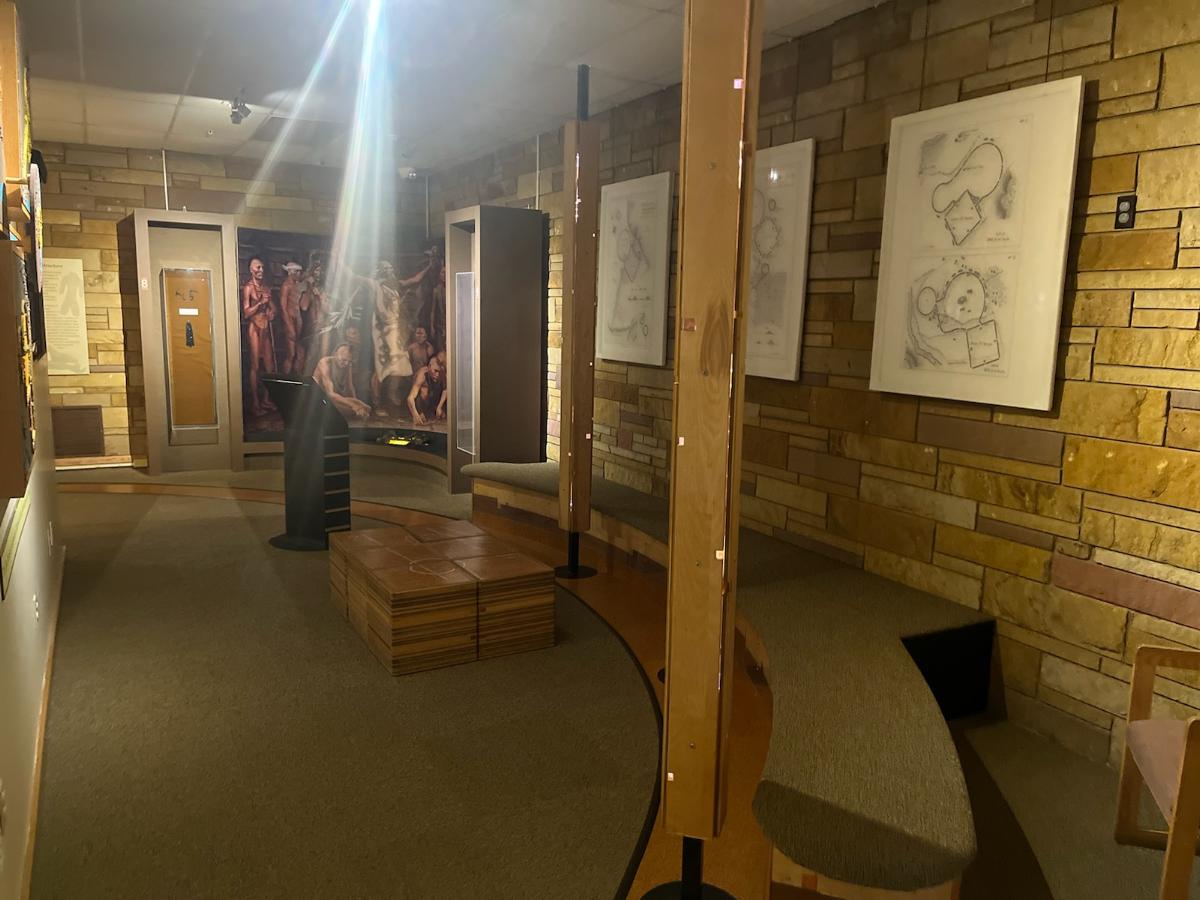Ohio’s Ancient Earthworks – By Guest Blogger John E. Hancock Professor Emeritus of Architecture

When traveling in Southern Ohio earlier this year, Triad Partner, Brent Foley, stopped at an exhibit in Chillicothe at the Hopewell Mound City site. He had worked on the exhibit as part of a studio while studying at the University of Cincinnati. Much to his surprise, the exhibit was still in place and in great shape. This led Brent to reconnecting with his professor, John Hancock, who had taught the studio. John shared about his efforts to get that site, and others around Ohio, added to the World Heritage list. The following blog post is a little bit from John about those efforts.

Photo of the exhibit installed by University of Cincinnati Students 20 years ago.

Photo of the exhibit installed by University of Cincinnati Students 20 years ago.

Photo of the exhibit installed by University of Cincinnati Students 20 years ago.
When Brent and his classmates designed and built that exhibit space, which also included our interactive-video exhibit, I had already been immersed in “Ancient Ohio” for several years: it was 1997 when another of my graduate students came into my office and said: “I want to do my thesis on the ancient earthworks of Ohio.” And (despite having taught ancient architecture in the school for 20 years) I said, “The What?”
He brought in the nineteenth-century drawings and accounts of the many huge, precise, geometric and hilltop earthwork enclosures, built along the valleys and hilltops of southern and central Ohio by an ancient Indigenous American culture now called “Hopewell.” My mouth dropped open in disbelief, and I said (what we have so often heard ever since doing public lectures on these places), “I had NO IDEA!”
Who knew that seventeen hundred years ago, Indigenous American Ancestors were designing and building precise earthen walls, at eye-level or higher, defining gigantic perfect circles, octagons, squares, and parallel lines, in combinations measured in miles? My astonishment turned to action!
So, many road-trips, archaeologist interviews, computer landscape models, script developments, and production schedules later, we opened that exhibit in Chillicothe. With other student teams and colleagues, we launched other museum exhibits and created interactive DVD’s featuring virtual recreations and flyovers of the sites (some are difficult to visualize any other way).
About a decade ago, all that material was assembled into a website: “The Ancient Ohio Trail” (www.ancientohiotrail.org)–still offering the most comprehensive and reliable resource on the earthworks, enough to support a three-week travel adventure in southern Ohio.
Since my retirement from UC in 2015, I’ve gotten in even deeper: helping to lead teams (from the Ohio History Connection, the National Park Service, and several Tribal Nations) to advance eight of these sites as candidates for UNESCO World Heritage inscription. Our nomination went in this past January; a vote by UNESCO could occur by next summer (2023). Called the “Hopewell Ceremonial Earthworks,” they are: two sites in Newark including the amazing Octagon Earthworks (with complex lunar alignments more precise than Stonehenge), Mound City and four others near Chillicothe, and the huge Fort Ancient high above the Little Miami River near Lebanon, Ohio.
Public awareness of the brilliant landscape monuments of the Ancient Ohioans has improved over these past two decades. And with World Heritage inscription coming soon (we trust), our Indigenous predecessors in this region will gain the highest global recognition possible for cultural and architectural achievement. Where ancient architecture is concerned, we have much in Ohio to be proud of, as do the modern tribal descendants of the earthworks’ genius builders.

